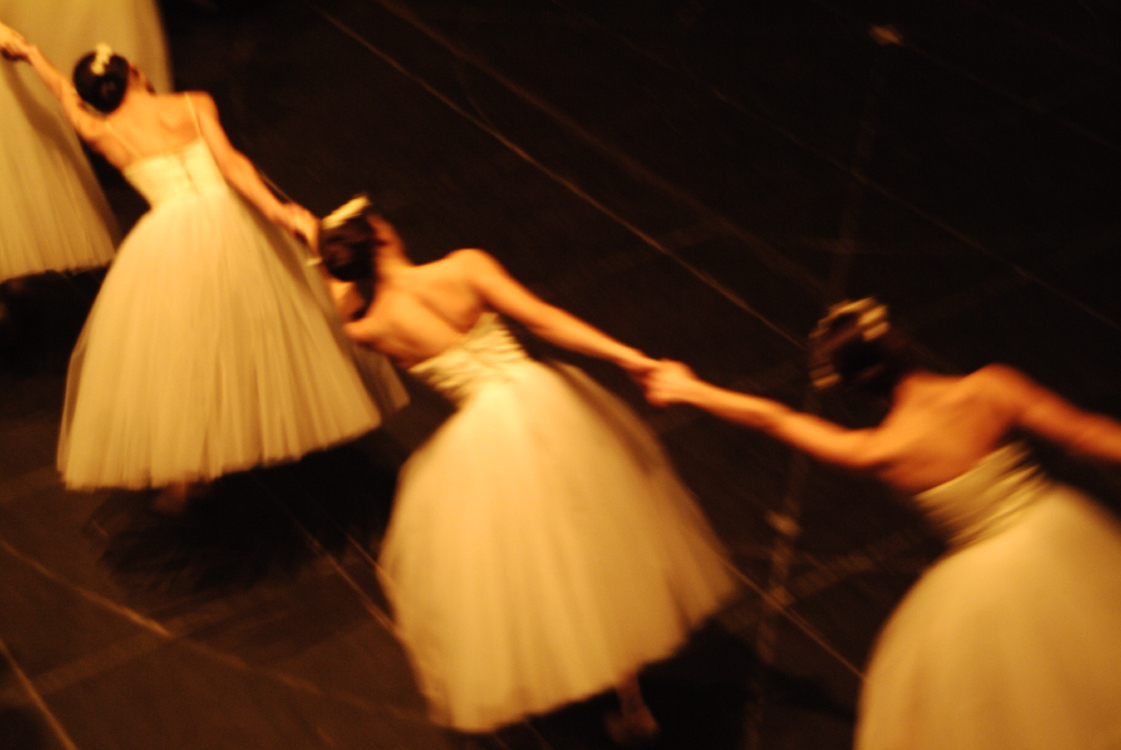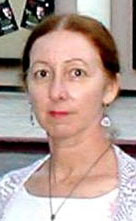 Dance~The Jewish
C~o~n~n~e~c~t~i~o~n Dance~The Jewish
C~o~n~n~e~c~t~i~o~nby Sheila Orysiek |
 |
A Nod of the Head: A Turning Point(e) in
Artistic Time – 98 Years Ago this Month..
In May 1909, Nicholas II was still “Emperor of all the Russias,” the Imperial
theaters had had a glittering dance season and the dancers of the Imperial
Ballet had departed in many directions ostensibly “on leave” – on vacation. But
young dancers at the height of their careers don’t like to take vacations away
from their dancing – they simply dance elsewhere. On the night of May 19, 1909
they were in Paris and the curtain was about to go up at the Theatre du Chatelet. The
exceedingly skeptical Parisian audience doubted that these dancers from a Russia
perceived as semi-barbaric, could possibly be a success in the city that had
given birth to the ballet.
Serge Diaghilev, a Russian who had been dismissed from his position as Assistant
Director of the Imperial Theaters several years before, had spent the
intervening years bringing a bouquet of Russian paintings, music and opera to
Paris with great success. This encouraged him to bring the Tsar’s own dancers
from the Russian Imperial Ballet. Immediately he ran into obstacles.
Since the dancers were in fact civil servants, they were engaged to dance for
the Imperial Theater through the winter social season and at various command
performances. Unfortunately, by the month of May, when the dancers were free,
the social whirl in Paris was over and people – the people who mattered – often
left the city. But that was only the first of several problems.
Though the ballet had matured from a folk dance to an artful child of the
theater in France, had been codified, and had been under the auspices of the
French royal court for three hundred years and more, by the late 1800’s it had
decayed into an entertainment presented at the end of an evening of opera. To
some extent it continued to exist at the sufferance of the male half of the
suitably wealthy as a framework for providing them with the opportunity to
observe a feminine ankle – or even a curved calf. Choices were then made for
the balance of the evening’s activities. The Salon de la Danse, made famous by
Degas, was the exhibit hall. In short, the ballet was no longer the art form it
once had been; Parisians had no memory of its past glories but they were
jealously protective of the fact that the ballet was considered totally French.
However, the greatest of Diaghilev’s problems was money. His life was spent on
the edge of a fiscal abyss. For that reason the lesser of the theaters –
Theatre du Chatelet - instead of the larger and much more prestigious Paris
Opera, had been engaged. Use of the smaller theater helped to rob the evening
of the all important cachet that captured Parisian hearts.
(So, where’s the Jewish connection? Read on, read on…..)
It is not often that a turning point in history, or in an art form, can be
recognized with such precision as what happened on that evening of May 19, 1909.
All the old conceptions (and misconceptions) of dance, music, costume, sets,
lighting, choreography, libretto, were swept away in the blaze of color, sound
and truly magnificent dancers and production. The glory of the ballet, which
had been moribund in Paris, had been incubating in Russia for two hundred years
and now burst forth in a kaleidoscope of triumph. Paris was overwhelmed by the
Russian art storm.
Fashion in clothing and furnishings were influenced, standards of what one
should expect from the theater were expanded and artists of every genre were
affected. The success was so complete that Diaghilev brought the Russian Ballet
– The Ballet Russe – back year after year expanding the touring to include the
rest of Europe, England, South America, North America, eventually touching every
continent, year after year until Diaghilev’s death in 1929. Following his death
The Ballet Russe continued to live and tour under different direction and names
- such as The Ballet Russe de Monte Carlo – until the 1950’s.
(The Jewish connection is coming up – I promise!)
During Diaghilev’s time as impresario he introduced to the world (or encouraged)
the following artists:
Dancers: Anna Pavlova, Vaslav Nijinsky, Bronislava Nijinska, Tamara Karsavina,
Fokine, Bolm, Mordkin. Baldina, Kosloff, Ida Rubenstein (Jewish), Danilova,
Massine, Spessivtseva, Sokolova, Doubrovska, Dolin, Lifar, Lopokova, Marie
Rambert (Miriam Ramberg – Jewish), de Valois, Prima Ballerina Dame Alicia
Markova (Lillian Alicia Marks – Jewish).
Artists - set, scene and costume designers: Benois, Bakst (Lev Samoilovich
Rosenberg – Jewish), Picasso, Matisse, Derain, Dali.
Choreographers: Fokine, Massine, Nijinska, Balanchine, Nijinsky – altogether
over 40 major productions, many of them still performed today.
Composers: Stravinsky, Rimsky-Korsakov, Glazunov, Poulenc, Satie, Auric, Ravel,
Debussy, R. Strauss, de Falla, Respighi, Prokofiev.
The above list is partial – only a small – tiny – segment of the great artists
discovered, presented and/or encouraged by Diaghilev.
As time went by the dancers (alas) aged and retired in various cities around the
world and opened schools and started companies such as Ninette de Valois founder
of the Royal Ballet (London) and Balanchine (with Lincoln Kirstein – Jewish)
founder of New York City Ballet. Two of them, Alexandra Baldina and Theodore
Kosloff opened a famous school in Southern California and my first ballet
teacher was their devoted student. Today, almost every well taught dancer is
likely to trace his/her pedigree back to these Ballet Russe foundations.
Theater as we know it has been profoundly affected – and ballet totally affected
– by the performance of May 19th, 1909.
(So – in addition to the artists above noted as being Jewish…..as I promised the
Jewish connection is coming up….)
At the very last moment before the curtain could rise, Diaghilev faced the first
of a series of continuing financial crisis that was to plague him throughout the
decades. But in this case, the curtain would definitely not go up unless he
could secure financial backing as security. Fortuitous application was made to
the Baron de Rothschild and – prescient as always – he guaranteed the financial
guardrail and the performance went on.
The glories of that evening and its subsequent seminal impact on theatrical art,
dance, music, composition, production, design, choreography, lighting and all
the artists and lovers of the arts down through the decades hung on the nod of
the head of the Baron de Rothschild.
The quiet gift behind the glitter – the name you never see on the program. This
May we will celebrate the 98th year since that seminal performance.
Some historians date that turning point(e) to May 18, 1909 – because sometimes
the dress rehearsal (in front of a select audience) is considered a “first
performance.” It’s the way dancers fool themselves into thinking that the first
night is really the second. night, and so the hurdle of a first night has
already been overcome.